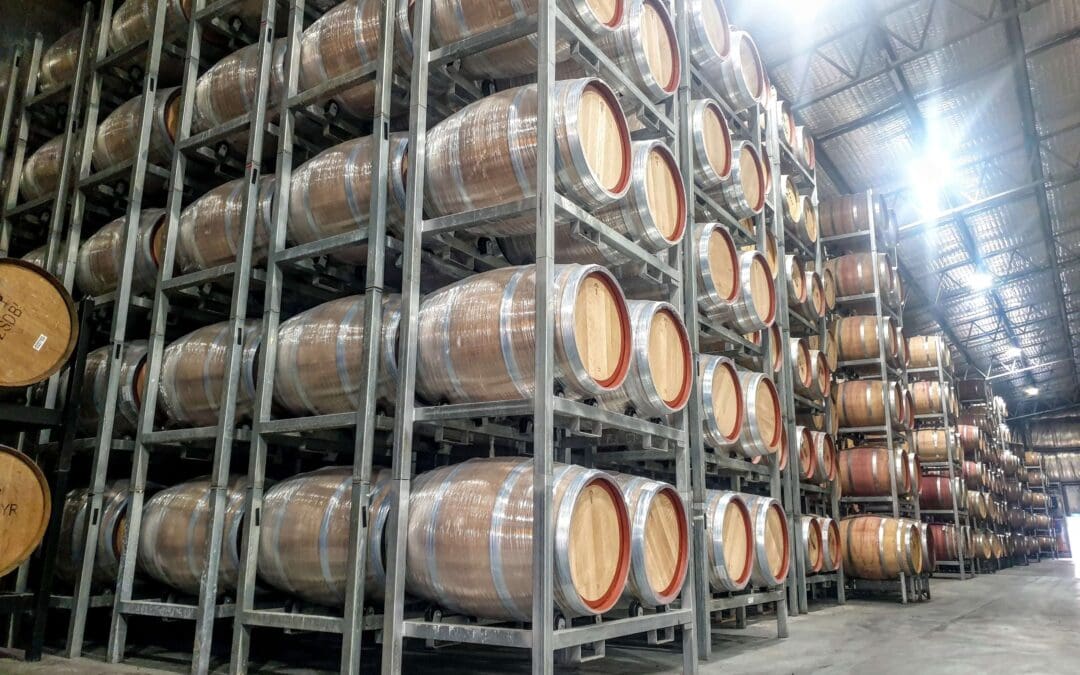If you are in the wine industry, you will know that the storage and handling of your barrels is critical to maintaining the quality of your wine. Traditional barrel cradles, being the choice from a cost perspective, can be inefficient and even dangerous. That’s why transitioning to the Barrel Masters is a smart move for wineries looking to optimise their barrel storage and safety.
Pro’s of Barrel Cradels:
These racks have lower stacking heights, and all weight is supported by the bottom barrel, leading to instability and even collapse. In fact, Safework Australia, the organisation responsible for promoting safety in the workplace, has been focused on improving safe handling and use of traditional barrel cradles. Here are some of the concerns with cradles.
- Cradles don’t allow for efficient access to the barrels
- Makes topping, sampling, and pumping more difficult and
- Time-consuming and harder for barrel-turning
- No interlocking system
The Barrel Master, however, solves these problems and more, providing a safer and more effective storage solution for wineries.
Key Benefits of the Barrel Masters include:
- High stacking capabilities: The Barrel Master allows for greater storage volumes with a minimal footprint, making the most of your space.
- Safe and secure storage: The unique interlocking locating system optimises space-saving and structural checks, while the protrusion-free construction ensures the safety of machinery and personnel.
- Versatile storage: The Barrel Master can accommodate thinner or uneven barrel sizes, providing greater flexibility for your winery.
- Innovative rotation options: The Barrel Master offers a variety of rotation options, including part rotation, occasional 360° rotation, and frequent complete 360° rotation, allowing for easy access to all barrels.
- Easy to move: The Barrel Master is portable and can be safely moved using a forklift.
- Durable and long-lasting: The Barrel Master is available in pre-galvanised material or post-manufacture hot dip galvanisation for a longer life span. It also features a damage-resistant design with no sharp edges and seamless barrel turning innovation.
With full international design registration, the Barrel Masters holds Australian Registered Design No: 154262, USA Design Application No: 29/201283, Canadian Design Application No:106040, and International Design Application No: PCT/AU2004/000853.
By transitioning to the Gorilla Barrel Master, wineries can benefit from a safer, more efficient, and more versatile barrel storage solution.
Don’t let inefficient and potentially dangerous barrel cradles compromise your production. Talk to us today about how you can transition to the Gorilla Barrel Master.

Gorilla Master Barrel Solutions













